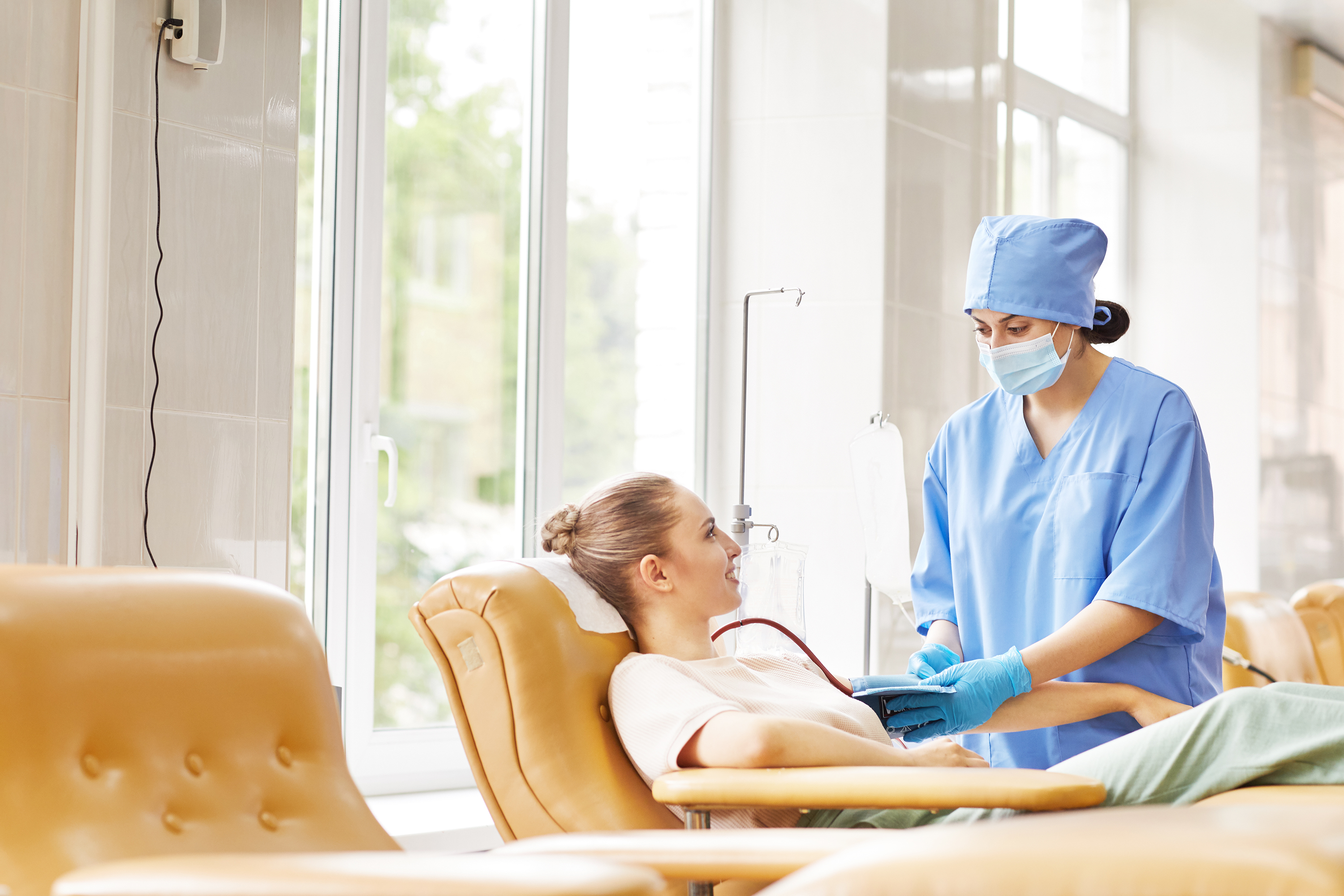Blood banks
Help reduce the risk of outbreaks & infection
Inactivate and reduce pathogens & pollutants in blood banks
The need for donated blood never wanes. According to the American Red Cross, every 2 seconds, someone in the U.S. needs blood, and approximately 36,000 units of red blood cells are needed every day. Every second of every day, donated blood saves trauma patients, organ transplants, surgery patients, those with chronic illnesses, and those battling cancer and other life-threatening conditions.
Blood banks are often high-traffic, busy facilities, with donors and staff coming and going, occupying the same space via air currents. There is an ongoing need to disinfect the air continually to reduce the risk of airborne transmission of infectious diseases and keep the blood-bank environment safe for donors and staff.
Prevent transmission of viruses like SARS-CoV-2, influenza & norovirus
Inactivate airborne and surface bacteria including superbugs like MRSA, TB and C.diff
Reduce indoor allergens such as dander, pollen, dust and mold spores
Air disinfection for healthcare environments
Wherever people are coming and going, pathogens and pollutants are being introduced to the indoor environment. WellAir's portable air disinfection devices and air cleaning systems use our patented NanoStrikeTM Technology to inactivate aerosolized viruses, bacteria, and fungi. Our Defend range of FDA-cleared 510(k) Class II medical devices combines our powerful NanoStrike Technology with a triple-stage filtration system. These devices not only inactivate pathogens but clear the air of pollutants such as pollen, particulate matter (PM), volatile organic compounds (VOCs), gases, chemicals, and odors.
UVC surface disinfection for healthcare environments
NuvaWave puts the power of hospital-grade surface disinfection in the palm of your hand. It is an instant UVC device proven to disinfect surfaces against deadly pathogens in one second with its targeted UVC light and portable, handheld design. NuvaWave is designed to be safe, fighting pathogens without needing to clear the room of patients and staff.



